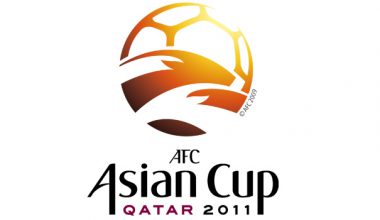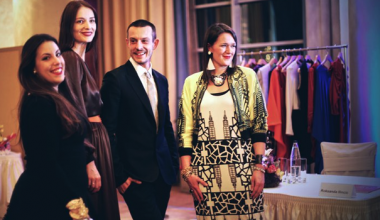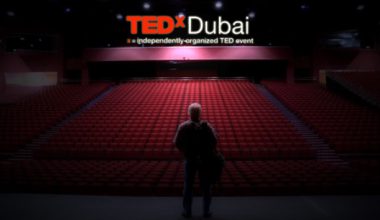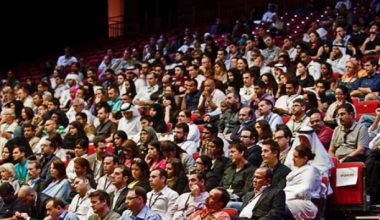
It is 10 minutes past 5, on a cool afternoon on the 15th of January at the Pavilion in downtown Dubai. People scramble to find seats in the media room, now packed with art aficionados, journalists, students and graduates. Aisles are quickly filling up, people sit on steps lining the walls, as we shift ourselves over in our seats to accommodate the stream of people flooding in all gathering for the second seminar of Art Dubai’s education programme. A sense of curiosity fills the air, as we anticipate the topics to be discussed: art galleries’ support of the local art scene, the management of art galleries, and gallery directors’ relationships with adopted artists, collectors, and the press.

The session, chaired by Myrna Ayad of Canvas magazine, begins with an informal introduction of the guest speakers, Asmaa Al-Shabibi of Lawrie Shabibi, Hetal Pawani of the Jam Jar and Sunny Rahbar of the Third Line, who were invited to share their professional insight with the steadily settling audience. A series of slideshows are presented, as the audience is navigated through the educational backgrounds and eventual career paths of each of the guest speakers, and how they auspiciously arrived at their shared goal of owning and running their own art galleries.

After managing Art Dubai in 2007 and consulting with clients on which artworks to purchase for their spaces, Shabibi set up Lawrie Shabibi with her partner William Lawrie, former Director of Contemporary Middle Eastern art at Christie's auction house. Pawani assumed a more unique approach, setting up a DIY painting studio where the public was encouraged to face the intimidating, white canvas and paint at their own discretion. She further developed her endeavour into a comprehensive arts program that supports artists, schools, organizations as well as the public, funding an international contemporary art gallery, artinthecity.com, Art Bus and Art Map alongside her painting studio. Rahbar, after graduating from Parsons School of Design and working in the Guggenheim in New York as well as Sotheby’s in London, returned to Dubai to promote local talent, and went on to co-found the Third Line with her business partners, Claudia Cellini and Omar Ghobash, in 2005.
Although an education in the arts is a sure-fire advantage for a career in the art field, a passion for the subject, consistent hard work, and good timing, is what the speakers attributed to their personal success.

Each gallery director was further questioned about the ways in whichthey supported the local arts scene, referring to side projects they manage alongside their exhibitions. Rahbar discussed the film projects that are showcased at Third Line, as well as the Pecha Kucha night they organize as an interactive multimedia forum, which allows artists to present 20 images from their work in an allotted time frame of 20 seconds, keeping the pace of the show energetic and interest in the work high. Pawani discussed the website she developed (artinthecity.com), which functions as a social networking site, much like Twitter, which informs the public of the latest news and happenings in the local art scene. Pawani also discussed her Art Bus venture, which "provides guided tours of the city’s prominent galleries, studios, art centres, alternative art spaces and art fairs" as well as Art Map which serves as an art events calendar for the region.

When asked about their relationships with the artists they adopt, the gallery directors highlighted that the quality of nurture provided is essential in cultivating a relationship. Since so much time is spent with the artists, a supportive environment is fundamental in order to accommodate the artists' needs, better comprehend their vision, and assist them in realizing their goals. After researching the artist and meeting with them, the choice of signing an artist is based on how well the director and artist complement each other, since the director must understand the artist to best represent them and trust the artist will deliver a body of work at an appointed time.
Promoting the artist’s work begins as early as a month before the exhibition is held, which is achieved through communication with the press, be it newspapers, magazines, websites, blogs, Twitter, and Facebook, as well as the publishing of the catalogue. The catalogue serves as a record of the artist’s work, and as a promotional tool for the exhibition. Shabibi asserted that what seems to be lacking is the press’ critiques of the actual exhibitions, be they positive or negative, to assist galleries in improving their performance or maintaining their standards.
Each of the galleries represented provides consulting services in order to raise money to support their endeavours, providing private owners as well as businesses with unique art pieces from their collections. Rahbar asserted that the economic recession was a challenging learning experience and distinct turning point, in that gallery owners had to go to further lengths to sell pieces to a now more selective and conscientious clientele. Other challenges gallery owners face when representing artists from the Middle East in the West, is refuting the misconception that art from the Middle East is relatively new, and therefore not as sought after. Further efforts by the media should be applied to dispel such misconceptions and afford the local arts scene the recognition it deserves internationally.

Art Dubai’s second seminar succeeded in informing all who attended with further knowledge and practical advice concerning support of the local arts scene, gallery management and fostering relationships with artists, collectors as well as the press. Judging from the turnout, seminars and forums, such as Art Dubai’s educational programme, should continue to be organized as a platform for the exchange of ideas for everyone who is eager to see and be a part of the growth of the local art community.
After an inspiring and informative seminar, the attendees rushed off to the Dubai International Financial Center, which kick-started its Art Nights event at the Gate Village, for another animated and art-filled evening.

– Nadine Fattouh
Images by Siddarth Siva courtesy of Art Dubai







